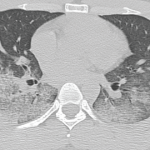ATLANTA—Although cyclophosphamide (CYC) may have transformed Wegener’s granulomatosis (WG) from an acute to chronic diagnosis, the risks associated with this drug have pushed rheumatologists and researchers to search for treatment alternatives.
A session at the 2010 ACR/ARHP Annual Scientific Meeting, “Treatment of Wegener’s Granulomatosis/Microscopic Polyangiitis: Understanding and Applying the Data from Recent Clinical Trials,” reviewed what the data have shown so far regarding CYC and other treatment options. [Editor’s Note: This session was recorded and is available via ACR SessionSelect at www.rheumatology.org.]
Philip Seo, MD, assistant professor of rheumatology at the Johns Hopkins Bayview Medical Center in Baltimore, discussed the evolution of WG treatment. For instance, he said longitudinal studies from the National Institutes of Health in 1992 demonstrated the value of CYC. “The good news about [the CYC] regimen is that it works,” Dr. Seo said. “There was 91% marked improvement and 75% complete remission,” he said. However, those improvements come at a cost.
“Forty-two percent of patients have permanent morbidity, 46% have serious infections, and 57% have infertility. There is an 11-fold increased risk of lymphoma and a 33-fold increased risk of bladder cancer. And that’s to say nothing of the risk of steroid-induced damage [often used during treatment]. These are numbers I frequently go over with patients,” Dr. Seo said.
Because of these risks, a variety of clinical trials have examined how to minimize CYC exposure, whether smaller doses or shorter treatment courses are more effective, or if avoiding the medication altogether is efficacious and safe, Dr. Seo said.
A Look at the Numbers
He discussed the results of a trial published in 2003 in the New England Journal of Medicine that found in patients with generalized vasculitis, the discontinuation of CYC and the substitution of azathioprine after remission appeared effective.1 This study included 155 patients with a new diagnosis of generalized vasculitis and a serum creatinine concentration of 5.7 mg/dL or less. Patients received at least three months of oral CYC and prednisolone. After remission, patients received either CYC (1.5 mg/kg/day) or azathioprine (2 mg/kg/day). Both patient groups received prednisolone and were followed for 18 months. Of the original 155 patients, 93% entered remission. In the azathioprine group, 15.5% of patients relapsed, while 13.7% of the patients in the CYC group relapsed.
“What you can take away from this is a short course of cyclophosphamide for remission induction, followed by a longer course of azathioprine for remission maintenance, is an effective treatment strategy for Wegener’s granulomatosis and microscopic polyangiitis,” Dr. Seo said.

